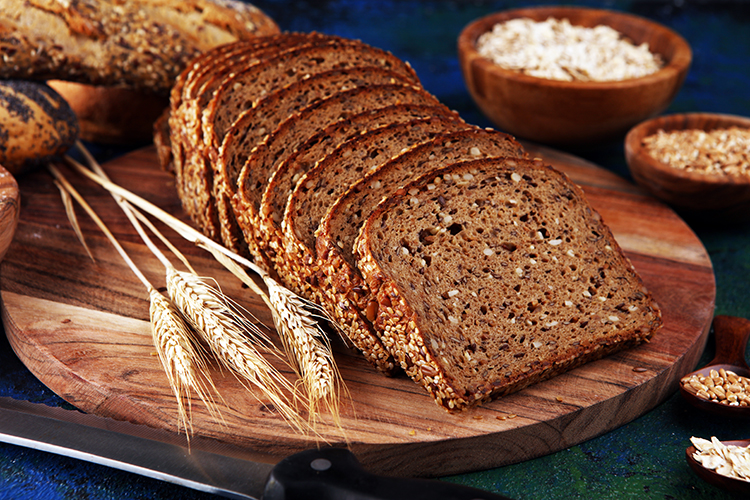Most consumers are familiar with the term “whole grains” and have at least a vague concept of what it means.
But what exactly are whole grains? What makes them healthy? What do bakers need to watch for when using them in formulations?
Lenexa-based Corbion, with a little help from their friends at the Oldways Whole Grains Council, have the answers.
What are whole grains and ancient grains?
A whole grain is a grain that is intact and contains its original three edible parts: the bran, the germ and the endosperm, according to the council.
This completeness is what sets whole grains apart from refined grains, which have had one or more of their original parts removed. Foods made using whole grains contain all the essential parts and naturally occurring nutrients.
Barley, brown rice, buckwheat, bulgur, millet, oatmeal and popcorn are among the better-known varieties.
Defined loosely, the council and Corbion consider ancient grains to be grains that have been largely unchanged over the last several hundred years.
All ancient grains are whole grains. All whole grains are considered ancient, in the sense that they can be traced back to the beginnings of agriculture, though today bakers differentiate between the two for the purposes of clarity.
For example, modern wheat is not considered an ancient grain, as it has been selectively bred over time for hardiness and is now considerably changed. Some examples of grains that are considered ancient are einkorn, emmer/farro, Kamut®, spelt, sorghum, teff, millet, quinoa and amaranth.
“Baking with gluten-free whole grains other than wheat can be challenging, but every non-gluten-forming grain will have its own challenges and qualities to consider.”
Laura Ehmke, Corbion
What are some of the technical challenges bakers face in working with whole and ancient grains?
“We stand by the advice of the Whole Grain Council, which advises bakers to be aware that whole grains can be more challenging than refined grains, as flours made from whole grains tend to absorb more liquid,” said Laura Ehmke, Scientist, Bakery Applications, for Corbion.
That can necessitate additional liquids, increased time for the dough to rest and additional proofing time, she added.
Something else to keep in mind, according to the council, is the fact that many whole grains are naturally gluten-free.
Gluten provides the necessary texture and structure to dough, and without it, bakers need to find the optimum water and mix time.
Corbion also recommends delaying whole grain inclusions to help keep the grains intact in the final product.
Are there particular whole or ancient grains that are especially challenging?
“Baking with gluten-free whole grains other than wheat can be challenging, but every non-gluten-forming grain will have its own challenges and qualities to consider,” Ehmke said.
Amaranth, for example, can change the taste of many baked goods, due to its earthy flavor when used as flour. Corbion recommends proceeding carefully when reformulating recipes for whole grains, and when possible, using recipes that are specifically designed as gluten-free baked goods.
How does the choice to use whole or ancient grains affect moisture, freshness, dough strength and other qualities?
Due to its lack of structure-providing gluten, using whole grains results in weaker dough, according to the council.
Also, the high absorption of whole grain flours requires increased water content and longer fermentation and proofing times.
While whole grains are healthier for consumption, Ehmke added, the oils that give whole grains some of their beneficial properties can shorten the shelf life of products, compared with their refined-grain counterparts.
However, she added that there have been promising results using sprouted whole grain flours to extend shelf life.
And while whole grain flours create unique needs that can require additional work, they also offer advantages in dough strength, because they can stand higher levels of hydration.
Tapping into the world of whole and ancient grains can provide bakers with a wide variety of new and exciting flavors, textures and colors to enhance their applications, according to the council.
Teff flour, for example, offers notes of cocoa, while brown rice flour imbues a caramel-like flavor. And sorghum, cornmeal and other freshly milled flours give baked goods a nutty sweetness.
And through the use of different forms of whole grains like flakes and crisps, bakers are able to customize the texture of their baked goods to their exact liking, tweaking elements like color by using purple barley, quinoa or teff.
What is Corbion doing to help its baker partners meet these challenges?
To meet the challenges of working with whole and ancient grains, Corbion has developed grains that are pretreated and ready for immediate use, containing just the right moisture balance to keep breads moist and fresh, Ehmke said.
These versatile, easy-to-use grains can be added directly into existing formulas or right on top before baking, in order to provide a simple way to create new varieties of baked goods without the expense of reformulation.
In addition, Corbion’s selection of pre-mixed grains gives bakers a convenient method to customize the flavor, texture and appearance of baked goods, with grains that offer up to eight different grains in one blend.
Corbion also offer a wide range of products that address everything from dough strength to extended shelf life and freshness — all critical when working with whole grains. All are available in both traditional and clean-label solutions, in order to provide bakers with convenient, effective solutions that help them meet the demands of their customers.
|
Corbion offers a variety of solutions that help bakers easily transform existing formulations into new, on-trend products by incorporating ancient and whole grains. Our hydrated and super-soaked grains have an outer shell that’s soft and ready to use. With refrigeration, they offer longer shelf life, which helps cut waste and saves you money. |


